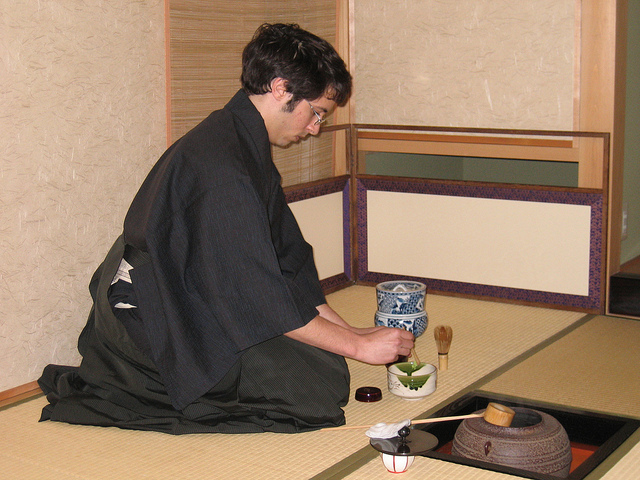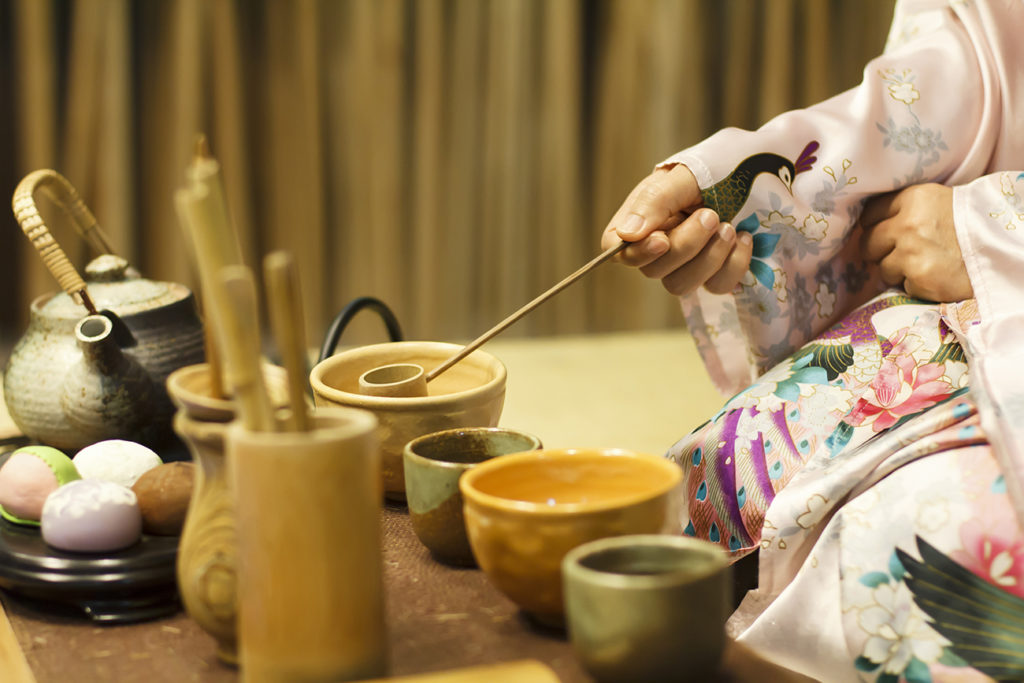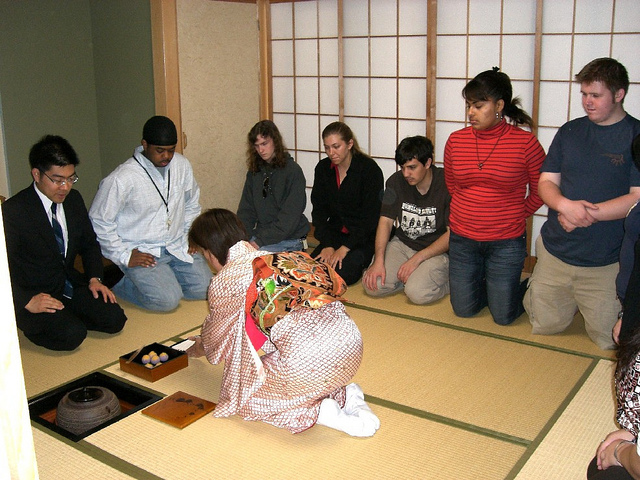
Chanoyu: Hot Water For Tea
The Japanese tea ceremony, or chanoyu (“hot water for tea”), is an elaborate ritual of serving green tea, macha, along with some sweets. Each gesture and act is deliberate. The process is not simply about drinking or making tea, but serving the best bowl of tea that is in the host’s (teishu) power to make. From the choice of utensils and flower arrangements to the calligraphy on the scroll stating the theme of the tea-meeting, each minute detail is given much attention to ensure that the guests, shokyaku, are pleased with the whole experience.
Traditional tea ceremony.
Philosophies
The chanoyu is a way to relieve the stress of everyday life, even for just a short while, by immersing in the Zen aesthetics of serenity and peace. Here are four of the philosophies portrayed in a Japanese tea ceremony:
Wa (harmony) – found in all the elements used in the ceremony and the room. The combination of colors, décor, equipment, all complement each other.
Kae (respect) – evident from the moment the guests pass through the nijiriguchi, a small entrance to the room. Guests kneel and bow to the hanging scroll, and sit as equals on the tatami mat. Each tea object is handled with the utmost care.
Sei (purity) – all stress and worry are left behind for a time. The space is meant to provide relaxation in the good company of friends. This concept is emphasized by the cleaning ritual of certain tea equipment such as the chawan, or tea bowl.
Jaku (tranquility) – this concept can only be achieved once the first three have been acknowledged and accepted.
Tea Equipment
The Japanese term is dōgu, “tools.” Even in the most basic tea ceremony, numerous dōgu are needed. Here are a few necessary items. (A full list would fill up a thick book!)
KCP student preparing tea equipment.
Chabako (茶箱 ) –a light wooden box that contains various tea utensils. It is used when a Chanoyu teacher has to give lessons at another location, or when someone has to go out to perform for guests.
Chaki ( 茶器 ) – assorted tea utensils or a tea container for macha.
Hachi ( 鉢 ) – a bowl for sweets eaten before the tea (which can taste a bit bitter) is served. It’s usually made of wood or ceramics.
Ro ( 炉 ) – a sunken fire pit placed in the floor and at the corner of a tatami mat. It’s used to heat up the kama, or metal kettle, during winter.
The tea ceremony may occur in a tea room, a tea garden, or even one’s home. At KCP, students learn the theory and practice of the Japanese tea ceremony. (See a look into the Japanese tea ceremony.)
The essential dōgu are provided, and students learn in a tea room where they can watch closely as the teishu enacts the precise, profound movements of the tea ceremony.
See more Japanese tea ceremony photos at our KCP Flickr.



